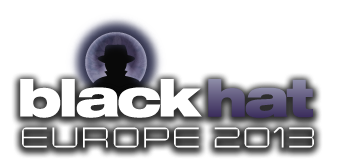Pentesting Smart Grid and SCADA
Justin Searle Mar 12-13
€1975
Ends January 10
€2200
Ends Feb 28
€2425
Ends March 15

Course Abstract
The Smart Grid brings great benefits for electric utilities and customer alike, however these benefits come at a cost from a security perspective. With increased functionality and addition inter-system communication, Smart Grid brings with it a greater risk of compromise that both Utilities and Customers must accept. To minimize this risk, penetration testing must be performed to minimize the exposed vulnerabilities before attackers can exploit this critical infrastructure that exist in all countries around the world.
This course provides a chance to practice hands-on penetration testing techniques used to test hardware, network protocols, and controlling servers of Smart Grid systems like smart meters, Home Area Networks (HAN), smart appliances, SCADA, substation automation, and synchrophasors. This course is structured around the formal penetration testing methodology created by the National Energy Sector Cybersecurity Organization Resource (NESCOR), a United States Department of Energy project. Using this methodology, we'll perform hands-on penetration testing tasks on embedded electronic field devices, their RF communications, and the myriad of user interfaces used throughout smart grid systems. We¹ll tie these techniques and exercises back to the smart grid devices that can be tested using these techniques. We will also do exercises on dissecting and fuzzing smart grid protocols like modbus, DNP3, IEC 61850, ICCP, ZigBee, C37.118, and C12.22. The course exercises will be performed on a mixture of real world and simulated devices to give students the most realistic experience as possible in a portable classroom setting.
Course Objectives
- Attendees will be able to explain the steps and methodology used in performing Smart Grid penetration tests.
- Attendees will be able to use the free and open source tools on the course pentesting distribution to discover and identify vulnerabilities in web applications.
- Attendees will be able to exploit several hardware, network, and server-side vulnerabilities.
Course Prerequisites
Basic penetration testing experience is desirable, but not required. It is assumed that attendees will have no knowledge of Smart Grid, SCADA, or critical infrastructure. This course is designed for intermediate level security professionals, be they developers, managers, or penetration testers.
Resources You're Responsible to Bring
- Laptop with at least two USB ports (three ports preferred)
- Latest VMware Player, VMware Workstation, VWware Fusion installed. Other virtualization software such as Parallels or VirtualBox will probably work if the attendee is familiar with its functionality, however VMware Player should be prepared as a backup just in case.
- Ability to disable all security software on their laptop such as Antivirus and/or firewalls
- At least twenty (20) GB of hard drive space
- At least four (4) GB of RAM
Resources Provided at the Course
- Power for your laptop
- Internet connectivity may or may not be available depending on the facility hosting the course
- ISO of the latest version of Samurai Smartgrid Testing Framework for Utilities (SamuraiSTFU)
- PDF version of the course slide deck
Trainer
Justin Searle is a Managing Partner of UtiliSec, specializing in Smart Grid security architecture design and penetration testing. Justin led the Smart Grid Security Architecture group in the creation of NIST Interagency Report 7628 and currently plays key roles in the Advanced Security Acceleration Project for the Smart Grid (ASAP-SG), National Electric Sector Cybersecurity Organization Resources (NESCOR), and Smart Grid Interoperability Panel (SGIP). Justin has taught courses in hacking techniques, forensics, networking, and intrusion detection for multiple universities, corporations, and security conferences, and is currently an instructor for the SANS Institute. In addition to electric power industry conferences, Justin frequently presents at top security conferences such as Black Hat, DEFCON, OWASP, AusCERT, and many others. Justin co-leads prominent open source projects including the Samurai Web Testing Framework, Middler, Yokoso!, and Laudanum. Justin has an MBA in International Technology and is a CISSP and SANS GIAC certified Incident Handler (GCIH), Intrusion Analyst (GCIA), and Web Application Penetration Tester (GWAPT).






























